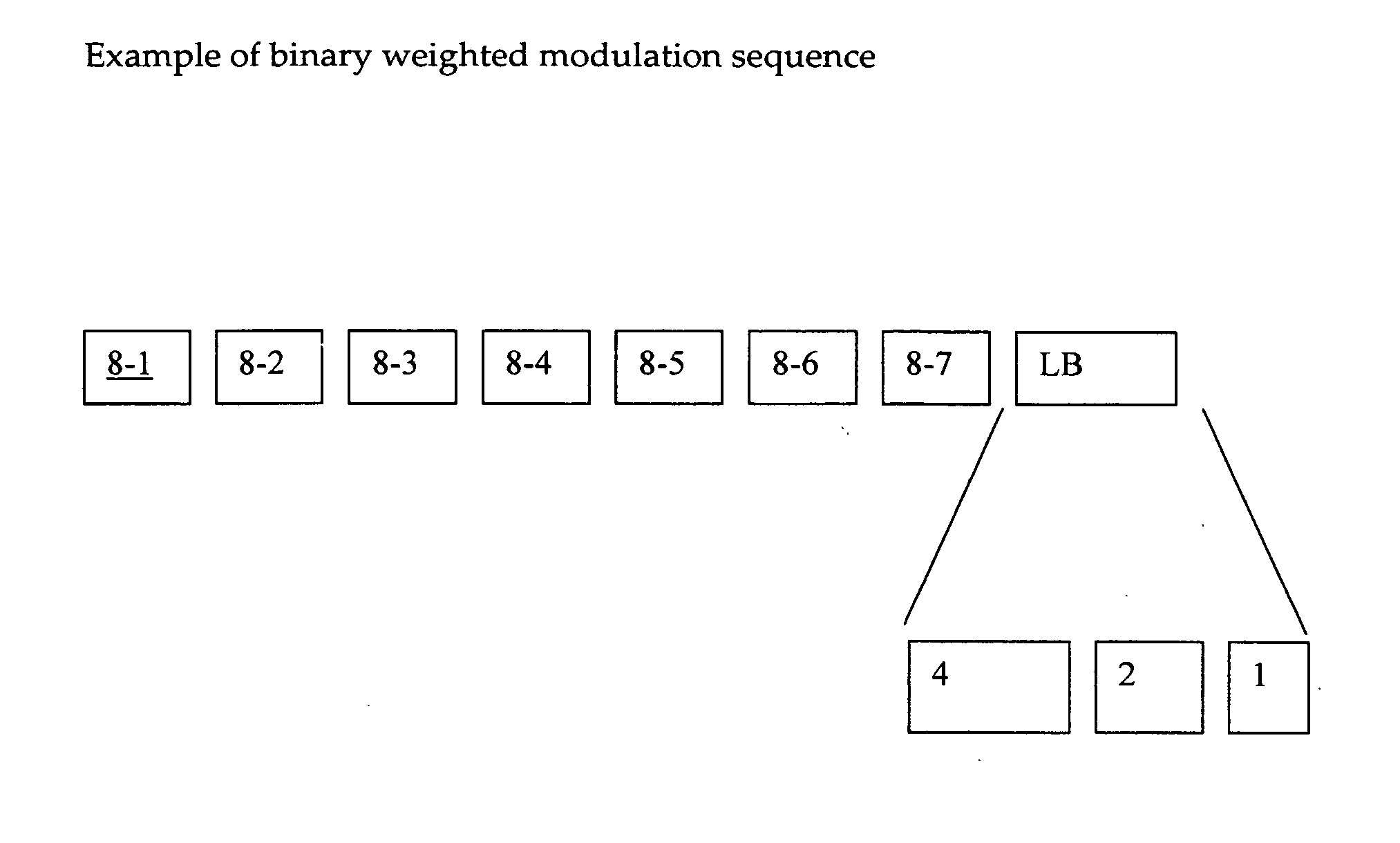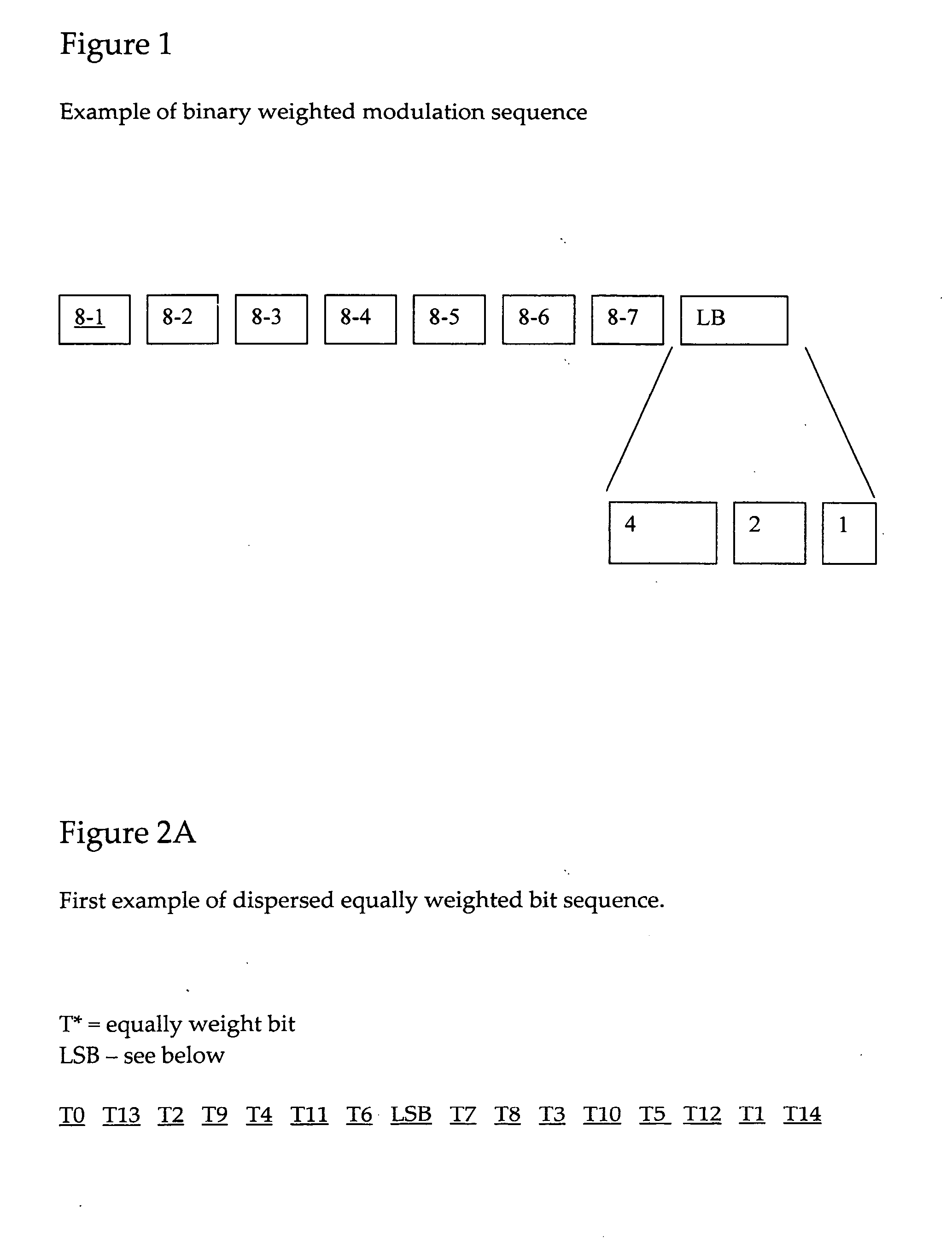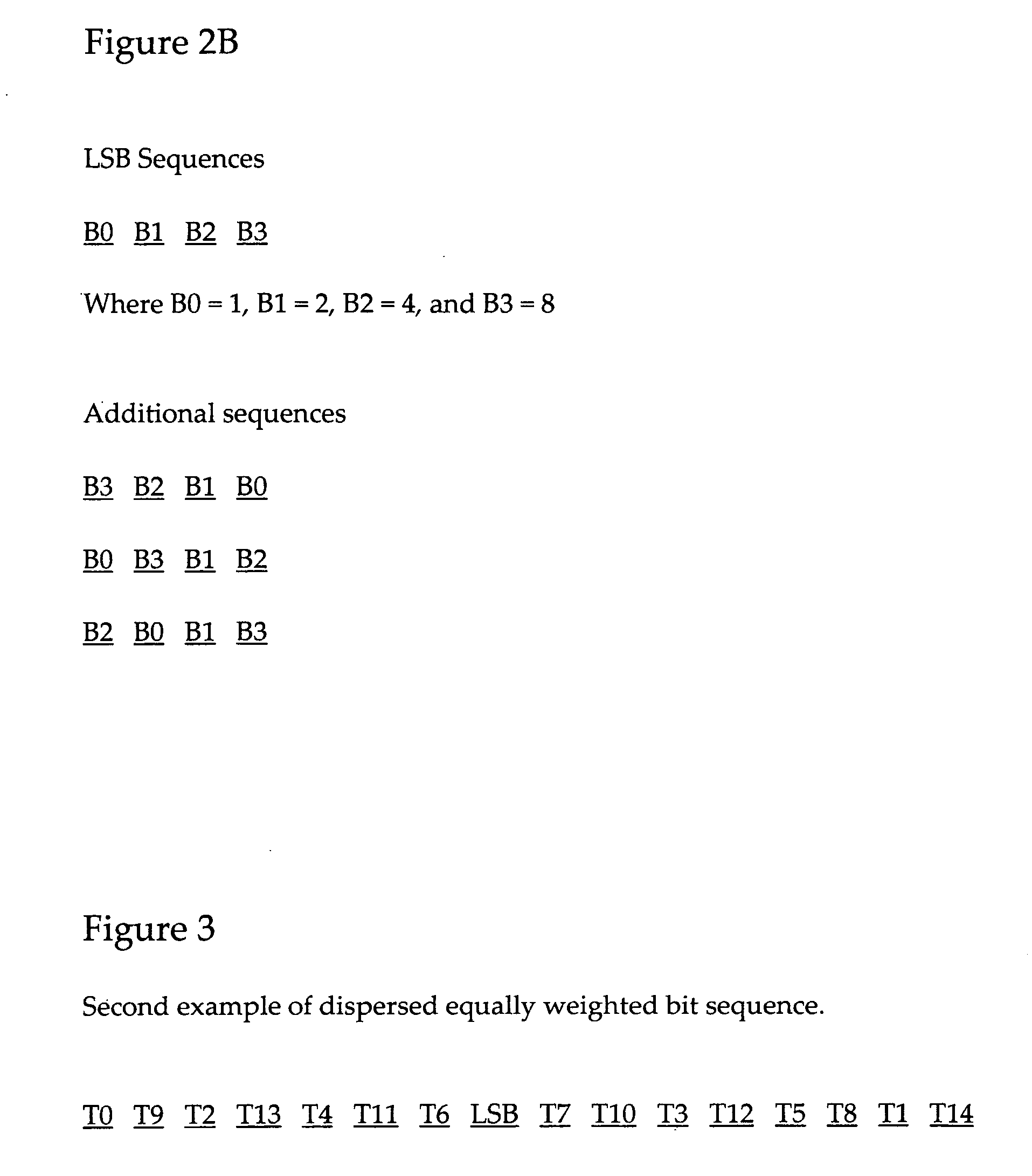Temporally dispersed modulation method
a modulation method and temporal dispersion technology, applied in the field of pulse width modulation techniques in driving pixel cells, can solve the problems of affecting the display, the most difficult control of contouring (dfc), and the unique set of problems of image display implemented with pulse width modulation techniques, so as to reduce visual disruption
- Summary
- Abstract
- Description
- Claims
- Application Information
AI Technical Summary
Benefits of technology
Problems solved by technology
Method used
Image
Examples
Embodiment Construction
[0027] The present invention addresses the foregoing problems in a unique and novel fashion. Special considerations are paid to the visual disruptions between adjacent pixels in order to reduce the number of temporal artifacts observed by modifying the order in which equally weighted data bits are shown. Unlike the methods used by the U.S. Pat. Nos. 6,151,011 and 6,326,380 wherein the binary weighted data words are converted into equally weighted words and asserting to the pixel circuit by ordering them in ascending or descending order. The sequence of the equally weighted bits as disclosed in the present invention are dispersed to create at least two temporal “on” centers as gray scale increases and a higher number of equally weighted bits are required.
[0028] Additionally the cluster of lesser binary-weighted bits is now moved to a position near the temporal center of the sequence. While it could remain at one end or the other, the relocation of the lesser binary-weighted bits to ...
PUM
 Login to View More
Login to View More Abstract
Description
Claims
Application Information
 Login to View More
Login to View More - R&D
- Intellectual Property
- Life Sciences
- Materials
- Tech Scout
- Unparalleled Data Quality
- Higher Quality Content
- 60% Fewer Hallucinations
Browse by: Latest US Patents, China's latest patents, Technical Efficacy Thesaurus, Application Domain, Technology Topic, Popular Technical Reports.
© 2025 PatSnap. All rights reserved.Legal|Privacy policy|Modern Slavery Act Transparency Statement|Sitemap|About US| Contact US: help@patsnap.com



